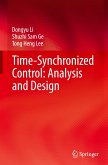
Gebundenes Buch
1st edition 2022
11. Januar 2022
Springer / Springer Nature Singapore / Springer, Berlin
978-981-16-3088-0

Broschiertes Buch
Softcover reprint of hardcover 1st edition 2002
21. Oktober 2010
Springer, Berlin
| eBook, PDF | 73,95 € |
Broschiertes Buch
Softcover reprint of the original 1st ed. 2011
23. August 2016
Springer / Springer London / Springer, Berlin
978-1-4471-7154-6
| Gebundenes Buch | 131,99 € | |
| eBook, PDF | 113,95 € |
Gebundenes Buch
2011
2. Juni 2011
Springer / Springer London / Springer, Berlin
12786145,978-0-85729-634-4
Broschiertes Buch
2007
8. Februar 2007
Springer / Springer Berlin Heidelberg / Springer, Berlin
978-3-540-49552-9
| eBook, PDF | 73,95 € |
Broschiertes Buch
Design and Applications
Softcover reprint of hardcover 1st edition 2009
21. Oktober 2010
Springer / Springer London / Springer, Berlin
978-1-84996-824-9
| Gebundenes Buch | 77,99 € | |
| eBook, PDF | 73,95 € |
Broschiertes Buch
Softcover reprint of hardcover 1st ed. 2005
22. Oktober 2010
Springer / Springer London / Springer, Berlin
978-1-84996-935-2
Gebundenes Buch
Design and Applications
2009 edition
23. Dezember 2008
Springer / Springer London / Springer, Berlin
12193370,978-1-84882-174-3
eBook, PDF
16. April 2007
Springer Berlin Heidelberg
eBook, PDF
10. Januar 2022
Springer Nature Singapore
eBook, PDF
28. November 2005
Springer London
Ähnlichkeitssuche: Fact®Finder von OMIKRON
